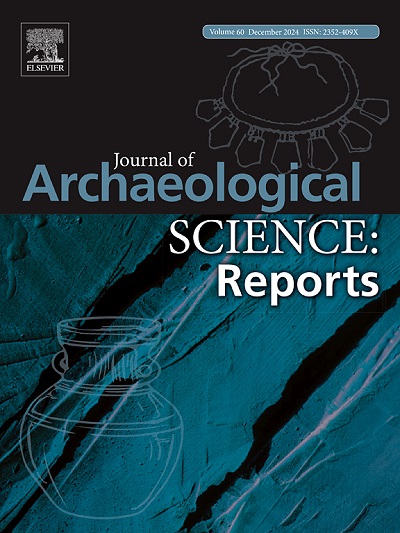The Roman way: Investigating the cremation conditions during the Roman period in Belgium using a multi-proxy and multi-sampling approach
IF 1.5
2区 历史学
0 ARCHAEOLOGY
引用次数: 0
Abstract
This study assesses cremation conditions in the Roman period using a multi-proxy analysis (FTIR-ATR and carbon and oxygen isotope analysis) on 332 burned bones from five Belgian Gallo-Roman cemeteries. The results suggest similar pyre structure, size, temperature, and body positioning across Gallo-Roman cremations. However, high variability in δ13C and δ18O values indicates differences in fuel selection and environmental factors. The wide δ13C range likely reflects the use of multiple wood types (e.g., Quercus sp./oak, F. sylvatica/beech) and different tree parts (e.g., trunk, branch, stump) in pyre construction. In contrast, δ18O variation may relate to quenching methods and/or seasonal and weather conditions during combustion. Differences were also observed in cremation conditions between the Metal Ages and the Gallo-Roman cremations from Belgium, with Roman cremations presenting better oxygen availability during combustion. Finally, the Gallo-Roman cemetery of Fouches is particularly interesting, as it dates to the Early Roman period and presents similarities in ventilation conditions with the cemeteries from the Metal Ages instead of the other Gallo-Roman cemeteries. The evidence from Fouches suggests a gradual transition from the Metal Ages to Roman cremation practices. The dating of Fouches to the Early Roman period could potentially explain that Roman cremation expertise was not immediately widespread but rather transferred gradually to the edges of the Roman Empire.
罗马方式:使用多代理和多抽样方法调查罗马时期比利时的火葬条件
本研究使用多代分析(FTIR-ATR和碳氧同位素分析)对来自五个比利时高卢罗马墓地的332块烧焦的骨头进行了火化条件评估。结果表明高卢罗马火葬的火堆结构、大小、温度和尸体位置相似。然而,δ13C和δ18O值的高变异性表明燃料选择和环境因素的差异。较宽的δ13C范围可能反映了在柴堆建造中使用了多种木材类型(如栎木/橡树,F. sylvatica/山毛榉)和不同的树木部位(如树干、树枝、树桩)。相反,δ18O的变化可能与燃烧过程中的淬火方法和/或季节和天气条件有关。在金属时代和高卢罗马火葬之间的火葬条件也存在差异,罗马火葬在燃烧过程中提供了更好的氧气供应。最后,富切斯的高卢罗马墓地特别有趣,因为它可以追溯到罗马早期,在通风条件上与金属时代的墓地相似,而不是其他高卢罗马墓地。来自福奇斯的证据表明,从金属时代到罗马的火葬习俗是逐渐过渡的。将福切斯的年代定在罗马早期,这可能解释了为什么罗马的火葬技术并没有立即普及,而是逐渐转移到罗马帝国的边缘。
本文章由计算机程序翻译,如有差异,请以英文原文为准。
求助全文
约1分钟内获得全文
求助全文
来源期刊

Journal of Archaeological Science-Reports
ARCHAEOLOGY-
CiteScore
3.10
自引率
12.50%
发文量
405
期刊介绍:
Journal of Archaeological Science: Reports is aimed at archaeologists and scientists engaged with the application of scientific techniques and methodologies to all areas of archaeology. The journal focuses on the results of the application of scientific methods to archaeological problems and debates. It will provide a forum for reviews and scientific debate of issues in scientific archaeology and their impact in the wider subject. Journal of Archaeological Science: Reports will publish papers of excellent archaeological science, with regional or wider interest. This will include case studies, reviews and short papers where an established scientific technique sheds light on archaeological questions and debates.
 求助内容:
求助内容: 应助结果提醒方式:
应助结果提醒方式:


